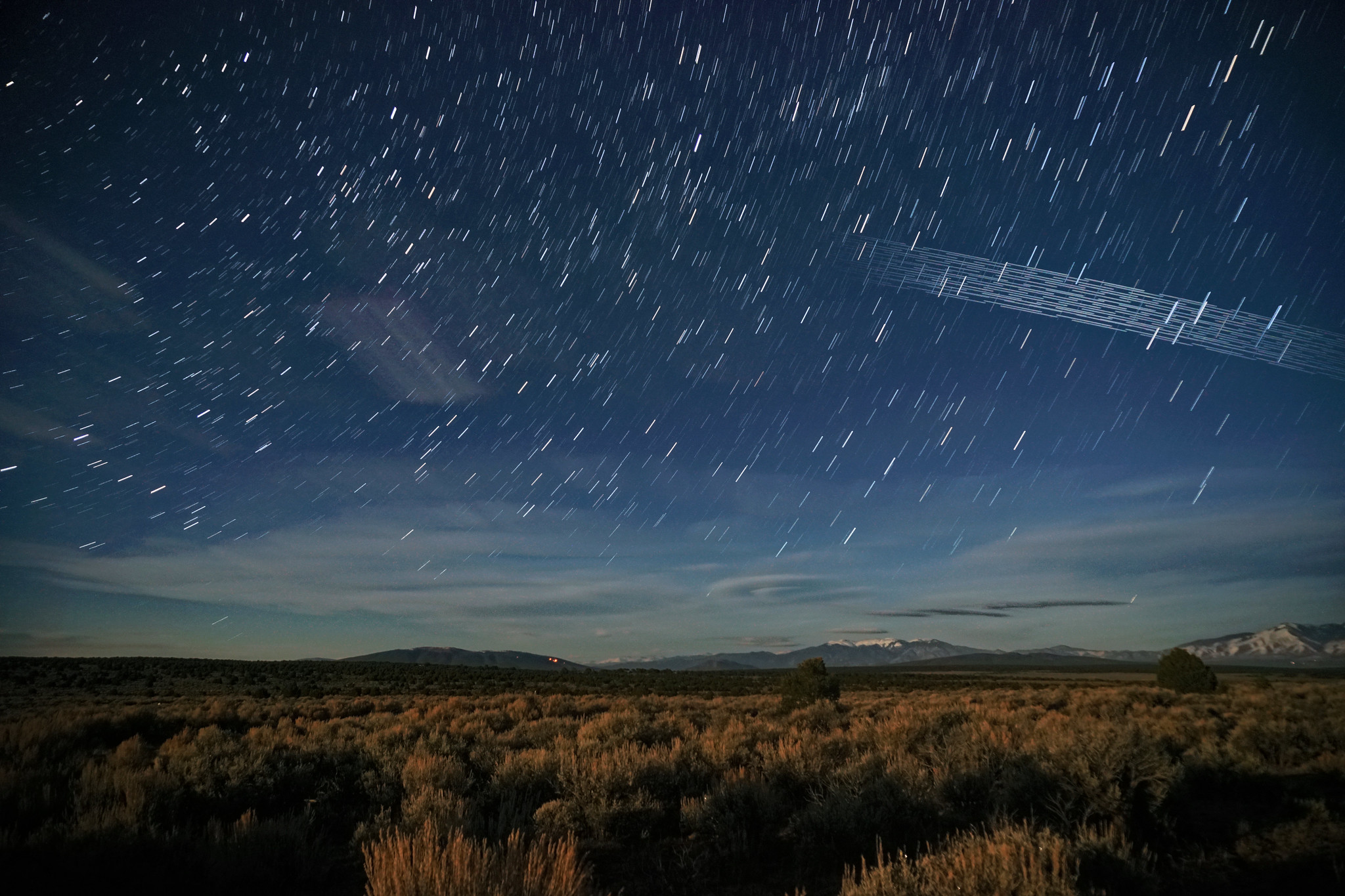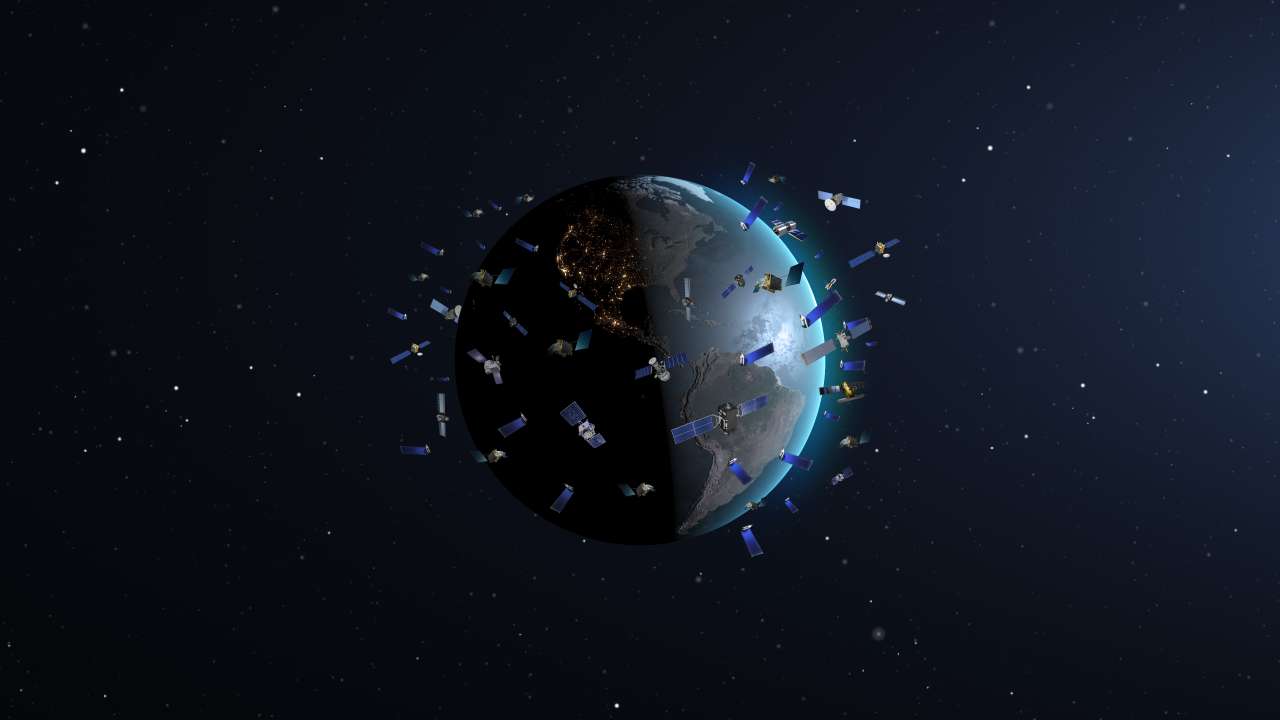
Satellite Megaconstellations and the Night Sky

If you’ve spent time looking at the sky in the last few months, you may have noticed an increase in the number of moving objects streaming across the night sky. You’re not imagining things.
In the past year, the spacecraft company SpaceX has launched 480 telecommunications satellites into low-earth orbit as part of its Starlink project. These are an initial phase of what will eventually be 12,000 connected satellites, working together as a web (known as a satellite megaconstellation) to provide uninterrupted, low-latency internet around the world. Although artificial satellites have orbited the Earth for over 60 years, megaconstellations represent a fundamental shift in how satellites are flown and operated.
This shift in satellite operation is a concern for naked-eye observers, astrophotographers, and the amateur astronomers and the professional astronomy community. Earlier this year, IDA released four principles to preserve the quiet enjoyment of the night sky. They are:
- Maintained brightness below the threshold for detection by the unaided eye.
- Visibility is an unusual occurrence.
- Industry transparency as to launch schedules and orbital parameters.
- Industry commitment to shared stewardship of the star-filled night sky.
Together with the American Astronomical Society, the International Astronomical Union, and others, IDA has encouraged SpaceX to reduce the impact of their satellites on both the field of astronomy as well as the general public by following these four principles. SpaceX has worked in good faith on engineering solutions to meet the challenge. Earlier this year the company announced that they would implement technology so that the satellites would be magnitude 7 or fainter (largely invisible to the unaided eye) within one week of launch. SpaceX has also committed to transparency with their launch schedule and orbital parameters. Currently, all orbital patterns are freely available from common satellite tracking sites such as Heavens Above, n2yo.com, and others. (See a dynamic, 3D orbit display of Starlink Satellites at Heavens Above here.) IDA is optimistic that these actions will set a strong precedent for future developers to follow.
However, even with SpaceX’s leadership in reducing the impact of their megaconstellations together with their commitment to transparency, concerns about large satellite constellations have not abated completely. At least six other companies have indicated interest in launching megaconstellations of low-earth orbiting satellites, including Amazon, OneWeb, and Telesat.
Long-term solutions to mitigate the impact of these satellites will require best practices in the deployment and operation of low-earth orbiting satellites, and changes to U.S. and international law.
Current space policy in the U.S. regulates the launch of orbital objects with only a limited scope. The FCC considers interference from radio signals, and collision avoidance but specifically exempts orbital objects from comprehensive environmental impact review. Regulations around the world largely ignore the potential environmental impact of orbital objects to the human environment, including the night sky.
In March, 2020, IDA filed a comment in opposition to the U.S. Council on Environmental Quality’s Proposed Amendments to the National Environmental Policy Act (NEPA) on the basis that “[t]he Proposed Amendments do not include orbital space in the vicinity of the Earth (e.g. near-Earth space) and its related concerns within the context and definition of the environment.” In other words, IDA argued that orbital space should be considered part of the human environment, and regulated as such by the FCC under the provisions of NEPA. Since then, we have been encouraged to see U.S. senators asking questions about the FCC’s authority to exempt satellite megaconstellations from general environmental reviews.
IDA now is involved in two related and ongoing efforts to promote appropriate and practical industry-wide best practices for the regulation of orbital objects. First, by supporting the National Science Foundation’s goal of developing a comprehensive white paper that explores concerns around satellite brightness, and solutions to reduce brightness and protect the night sky. And also by contributing to the United Nations Office for Outer Space Affairs (UNOOSA) Committee on the Peaceful Uses of Outer Space (COPUOS) advancement of a resolution to the UN General Assembly in 2021.
We are encouraged by the collaborative response from both SpaceX and the greater satellite industry. With continued efforts and cooperation with the astronomy community to develop best practices in operation and regulation of satellite megaconstellations, we can both enjoy the quiet beauty of the night sky, and support the advancement of internet availability around the world.


















